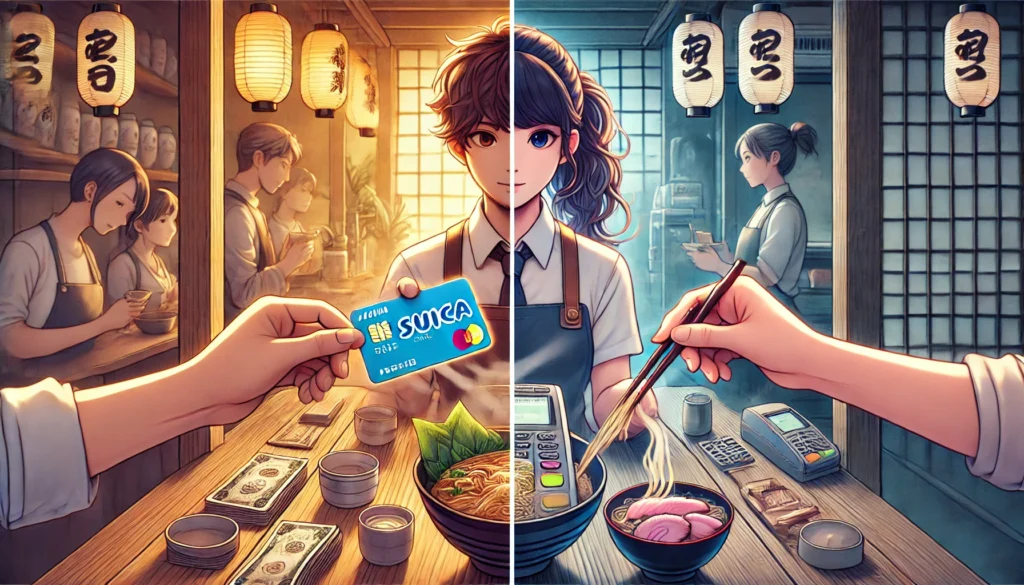Are you planning a trip to Japan and feeling confused about the Japanese yen? You’re not alone! Understanding Japanese yen info is essential for any traveler to navigate financial transactions smoothly in the Land of the Rising Sun.
In this comprehensive guide, we’ll explore everything you need to know about the Japanese yen – from its history and denominations to practical tips for using it during your travels. Whether you’re a first-time visitor or a seasoned Japan enthusiast, this guide will equip you with valuable Japanese yen info to make your financial experience in Japan stress-free and enjoyable.
The Basics of Japanese Yen Info: What You Need to Know
The Japanese yen (¥ or JPY) is Japan’s official currency and has been since 1871. As one of the world’s major currencies, it plays a significant role in international finance and is currently the fifth most traded currency globally.
Japanese Yen Denominations
Understanding Japanese yen info begins with knowing the available denominations:
Banknotes (Paper Money):
- ¥1,000 – Features bacteriologist Hideyo Noguchi
- ¥2,000 – Features Shureimon Gate (rarely used)
- ¥5,000 – Features novelist Higuchi Ichiyo
- ¥10,000 – Features educator Yukichi Fukuzawa
Coins:
- ¥1 – Aluminum (silver color)
- ¥5 – Brass (gold color with hole)
- ¥10 – Copper (copper color)
- ¥50 – Nickel (silver color with hole)
- ¥100 – Copper-nickel (silver color)
- ¥500 – Nickel-brass (gold color)
When handling Japanese yen info correctly, it’s good to note that ¥1 and ¥5 coins are less commonly used in everyday transactions but are still legal tender.
A Brief History of the Japanese Yen
To truly appreciate Japanese yen info, we should understand its rich history. The word “yen” comes from “en” (円), meaning “round” or “circle,” referencing the shape of coins. The currency was officially adopted in 1871 during the Meiji period, replacing the complex monetary system of the Edo era.
Throughout its history, the Japanese yen has experienced significant fluctuations. After World War II, Japan pegged the yen to the US dollar at a rate of ¥360 to $1. This fixed exchange rate remained until 1971 when international pressure led to its floating exchange rate system.
Today, the Japanese yen is renowned for its security features, making it one of the most difficult currencies to counterfeit. This commitment to security is a key piece of Japanese yen info that contributes to its global reputation for reliability.
Practical Japanese Yen Info for Travelers
Exchange Rates and Where to Exchange Money
When researching Japanese yen info before your trip, understanding exchange rates is crucial. Rates fluctuate daily, so it’s wise to monitor them before your departure. As of February 2025, the exchange rate stands at approximately:
- 1 USD = ¥147
- 1 EUR = ¥158
- 1 GBP = ¥186
For the best exchange rates:
- Japanese Banks – Offer competitive rates but have limited operating hours (9 am – 3 pm weekdays)
- Airport Exchange Counters – Convenient but typically offer less favorable rates
- Seven Bank ATMs – Many travelers find these provide good rates with minimal fees
When exchanging money, always compare rates and be aware of any commission fees. This crucial Japanese yen info will help you maximize your travel budget.
Using ATMs in Japan
ATM access is an important aspect of Japanese yen info for visitors. Not all Japanese ATMs accept foreign cards, so look for:
- Seven Bank ATMs (in 7-Eleven convenience stores)
- Japan Post Bank ATMs
- ATMs in international airports
These typically have English instructions and accept major international cards. ATM operating hours vary:
- Bank ATMs: Usually until 9 pm (some until midnight)
- Convenience store ATMs: Often 24/7
A pro tip for savvy travelers seeking reliable Japanese yen info: always decline any currency conversion offers at ATMs. Select “No” if asked to convert to your home currency, as this usually results in less favorable exchange rates.
Credit Cards and Digital Payments: Modern Japanese Yen Info
While cash remains king in Japan, credit card acceptance has increased significantly in recent years, especially in urban areas and tourist destinations.
Credit Card Acceptance
Major establishments that typically accept credit cards include:
- Hotels and ryokans
- Department stores and shopping malls
- Chain restaurants
- Tourist attractions
- Major train stations
Cards commonly accepted:
- Visa
- Mastercard
- American Express (less widely accepted)
- JCB (Japan’s domestic card)
Despite this progress, many smaller establishments, traditional restaurants, and markets still operate on a cash-only basis. Having cash on hand is essential Japanese yen info that can save you from awkward situations.
Digital Payment Options
The digital payment landscape is rapidly evolving in Japan. Recent Japanese yen info indicates growing acceptance of:
- Suica/Pasmo – Transit cards that can also be used for small purchases
- PayPay – A popular Japanese mobile payment app
- LINE Pay – Connected to the popular messaging app
- Apple Pay/Google Pay – Accepted at increasing numbers of locations
While these options are convenient, they’re not universal, and some require Japanese bank accounts or phone numbers to set up.
Tax-Free Shopping: Maximizing Your Japanese Yen
A valuable piece of Japanese yen info for tourists is understanding Japan’s tax-free shopping system. Visitors staying less than six months can receive exemptions from Japan’s 10% consumption tax on eligible purchases.
Requirements for Tax-Free Shopping:
- Minimum purchase amount: ¥5,000 per store per day
- Valid passport: Must be presented at time of purchase
- Visitor status: Must be staying in Japan for less than 6 months
- Export commitment: Purchased items must leave Japan within 30 days
Categories of Tax-Free Goods:
- General goods: Electronics, clothing, souvenirs, etc.
- Consumable goods: Food, drinks, cosmetics, etc.
For consumable goods, additional restrictions apply – they must remain unopened until departure from Japan.
When shopping, look for the “Tax-Free” sign displayed by participating retailers. This essential Japanese yen info can save you significant money during your trip.
Tipping Culture and Japanese Yen Info
Unlike many Western countries, tipping is not customary in Japan and can sometimes be considered rude or confusing. This is crucial Japanese yen info to avoid awkward social situations.
Most service industries in Japan build their compensation into their pricing structure. Many hotels and upscale restaurants include a service charge (typically around 10-15%) in your bill, in addition to the consumption tax.
If you receive exceptional service and want to show appreciation, consider:
- A small gift from your home country
- A sincere thank you and a bow
- A written note of appreciation
Understanding this aspect of Japanese yen info will help you navigate social customs with respect and confidence.
Interesting Facts About Japanese Yen
To round out your Japanese yen info knowledge, here are some fascinating facts:
- The ¥10,000 note features Yukichi Fukuzawa, who founded Keio University and was a pioneer in Japanese education
- Japanese coins have unique features – the ¥5 and ¥50 coins have holes in their centers
- The ¥1 coin is made of aluminum and is so light it floats on water
- The Japanese mint produces some of the world’s most technically advanced currency with multiple security features
- In 2024, Japan introduced measures to encourage cashless payments, though cash remains predominant
These distinctive characteristics make the Japanese yen one of the world’s most recognizable currencies and add depth to your Japanese yen info knowledge.
Managing Your Budget with Japanese Yen
Understanding typical costs is an important aspect of Japanese yen info for travel planning. Here’s a general breakdown of expenses in Japan:
Accommodation (per night):
- Budget hostel: ¥2,000-¥4,000
- Business hotel: ¥5,000-¥10,000
- Mid-range hotel: ¥10,000-¥20,000
- Luxury hotel: ¥30,000+
Meals:
- Convenience store meal: ¥500-¥700
- Ramen shop: ¥800-¥1,200
- Casual restaurant: ¥1,000-¥2,000
- Mid-range restaurant: ¥2,000-¥4,000
- High-end dining: ¥10,000+
Transportation:
- Tokyo metro (one-way): ¥170-¥320
- City bus: ¥200-¥300
- Taxi starting fare: ¥400-¥700
- Shinkansen (bullet train) Tokyo to Osaka: ¥14,000
This practical Japanese yen info will help you create a realistic budget for your trip and avoid financial surprises.
Common Challenges with Japanese Yen and How to Overcome Them
Even with thorough Japanese yen info preparation, travelers may encounter challenges:
Carrying Cash Safely
With Japan being predominantly cash-based, you’ll likely carry more cash than you’re accustomed to. To manage this safely:
- Use a money belt or secure inner pocket
- Separate your cash and store it in different places
- Utilize hotel safes when available
- Be discreet when handling large amounts
Dealing with Leftover Yen
At the end of your trip, you might have leftover Japanese yen. Options include:
- Converting back to your home currency (often with unfavorable rates)
- Saving for a future trip
- Spending at duty-free shops in the airport
- Donating to charity boxes at the airport
Communicating at Banks and ATMs
Language barriers can complicate financial transactions. To overcome this:
- Use international ATMs with English options
- Prepare written notes in Japanese stating what you need
- Have your hotel concierge write down instructions
- Use translation apps to communicate with bank staff
This practical Japanese yen info will help you navigate potential difficulties with confidence.
Resources to Learn More About Japanese Language and Currency
For travelers who want to deepen their understanding beyond basic Japanese yen info, we offer several free guides on our resources page:
- Counting to 100 in Japanese – Essential for understanding prices and numbers
- 100+ Essential Japanese Phrases – Including useful financial phrases
- Hiragana & Katakana Cheat Sheet – For reading basic Japanese text
- JLPT N5 Kanji Cheat Sheet – Includes kanji related to money and shopping
These resources complement your Japanese yen info knowledge and enhance your overall experience in Japan. Check out our resources page to download these free guides and prepare for your Japanese adventure!
Conclusion: Mastering Japanese Yen Info for a Smooth Trip
Understanding Japanese yen info is more than just knowing the exchange rate – it’s about appreciating the currency’s history, navigating practical usage, and respecting the cultural norms surrounding money in Japan.
By familiarizing yourself with the denominations, knowing where to exchange money for the best rates, understanding when to use cash versus cards, and learning about tax-free shopping opportunities, you’ll be well-prepared to handle financial transactions during your time in Japan.
Remember that Japan remains more cash-oriented than many Western countries, so always carry sufficient yen for your daily needs. With this comprehensive Japanese yen info guide, you’re now equipped to manage your money confidently and focus on enjoying the incredible experiences Japan has to offer.
Have you used Japanese yen during your travels? Do you have additional Japanese yen info or tips to share? We’d love to hear about your experiences in the comments below!
This article about Japanese yen info was last updated on February 28, 2025, to reflect the most current exchange rates and financial practices in Japan.




